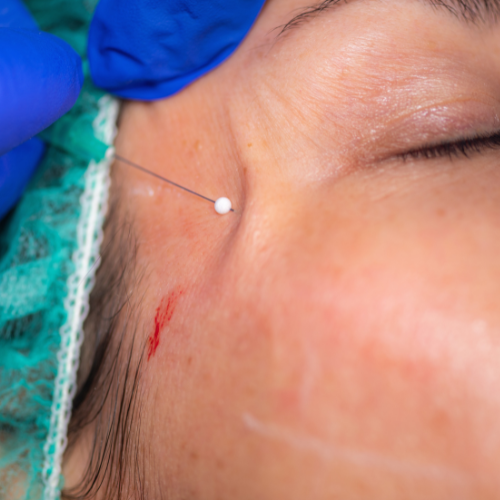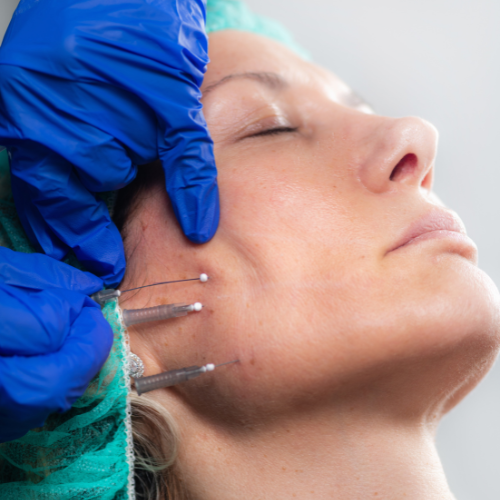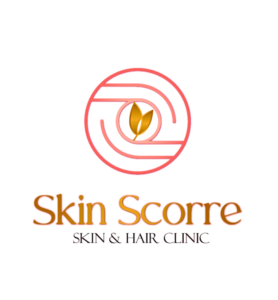What is Threads for Anti-aging?
Thread lift is a cosmetic procedure that offers a minimally invasive alternative to facelift surgery.The first is fairly straightforward. By threading thin, dissolvable sutures underneath your skin, your doctor is able to pull your skin tight around your forehead, neck, or torso.
Invisible, painless “barbs” grab on to your skin and make sure that the thread grips your underlying tissue and muscles as the thread is pulled tight.
Once a barbed thread is inserted, your body’s healing response is triggered. Even though you’re not injured by the threads under your skin, your body detects a suture material and stimulates collagen production in the affected area. Collagen can fill gaps in sagging skin and restore a more youthful elasticity to your face.

Why Threads?
Thread lift can help in lifting sagging skin from the face, jaws, neck, and eyebrows. Thread lifts are also used for breast lift procedures now.Thread lift can help in the shaping of the jawline. Thread lift can be done to improve areas like
- Nasolabial folds
- Mentolabial folds
- Eyebrow lift
- Marionette Lines
- Jawline shaping
- Undereye areas
- Neck skin tightening etc
Steps for Threads
Thread lift is a simple procedure. Your dermatologist will clean the skin with an antiseptic solution. He will inject a small amount of local anesthetic at certain entry points of threads. A fine cannula containing threads will be inserted gently into the skin. The cannula is pulled out leaving the thread in the skin. Your doctor will pull the thread up giving the desired lift to your skin.

Post Care
- Avoid touching or rubbing: Prevent thread displacement and infection by refraining from touching the treated area for 24-48 hours.
- Use cold compresses: Reduce swelling and discomfort with cold compresses applied gently for short intervals.
- Take prescribed medications: Manage discomfort and prevent infection by following your doctor’s prescribed pain relievers or antibiotics.
- Avoid strenuous activities: Minimize swelling and thread displacement risk by avoiding heavy lifting and vigorous exercise for a week.
- Sleep with head elevated: Promote healing and reduce swelling by sleeping with your head elevated on pillows.
- Avoid excessive facial movements: Prevent strain on the treated area by avoiding exaggerated facial expressions for a few days.
- Follow gentle skincare routine: Use mild cleansers and moisturizers; avoid harsh products that could irritate the skin.
- Protect from the sun: Limit sun exposure, use high SPF sunscreen, and wear protective clothing to prevent UV damage.
- Attend follow-up appointments: Monitor progress and address concerns by following up with your doctor as scheduled.
- Be patient: Allow time for results to manifest naturally; avoid over-manipulating the treated area and contact your doctor if any severe symptoms occur.
Popular Questions
All peels that a dermatologist performs require some at-home care. The following table shows you what you can expect.
After a medium or deep peel, you will have downtime. A deep chemical peel requires recuperation at home for 2 to 3 weeks.
Once your skin heals, you will see the results. Healing time ranges from 1 day for a refreshing or lunchtime peel to 14 days or longer for a deep peel. To get the results you seek from a refreshing peel or lunchtime peel, you may need to have 3 to 5 peels.
Most results are not permanent because our skin continues to age. If you have lots of sun-damaged skin or precancerous skin growths called AKs, you will likely continue to see new spots and growths on your skin.
To maintain results, you can repeat mild and medium chemical peels. Your dermatologist can tell you how often you can have a repeat treatment. A person can have only one deep peel.
